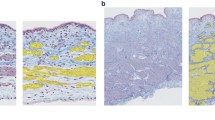Abstract
Bladder smooth muscle contraction is mediated by both direct calcium entry through the cell membrane, and by calcium induced calcium release (CICR) from the sarcoplasmic reticulum (SR) storage sites. Ryanodine is a neutral plant alkaloid which binds to an ion channel located on the SR membrane. Its effects in cardiac skeletal muscle are well characterized where it inibits the efflux of intracellular calcium stores, and thus it serves as a negative inotrope. It has also been shown that in the develpping rabbit myocardium, there is a gradual increase in the expression of this ion channel. Little has been written about the expression and function of the ryanodine sensitive ion channel in smooth muscle. Recently we have shown that neonatal rabbit bladder smooth muscle is not very sensitive to ryanodine, while that from mature rabbits is extremely sensitive. This leads us to quantify the expression of the ryanodine sensitive ion channel. In this paper we demonstrate that the Kd values do not change to any significant degree with normal rabbit bladder development. However the Bmax values for 3 day, 2, 4, 6, and 8 week rabbit bladder smooth muscle are 7, 10, 15, 29, and 44 fmol specifically bound ryanodine/mg protein. The differences between the neonatal groups and the mature groups are significant (P<0.5). This increase in ryanodine sensitive ion channel expression with normal growth would suggest that with normal maturation, the bladder smooth muscle cell acquires an increased pool of sequestrered intracellular calcium. This would follow a similar pattern of development that has already been described in rabbit myocardium.
Similar content being viewed by others
References
Lai FA, Erickson HP, Rousseau E, Liu QL, Meissner G: Purification and reconstitution of the calcium release channel from skeletal muscle. Nature 331–315, 1988
Marban E, Wier WG: Ryanodine as a tool to determine the contributions of calcium entry and calcium release to the calcium transient and contraction of cardiac purkinje fibers. Circ. Res. 56–133, 1985
Klitzner TS, Friedman WF: A dminished role for the sarcoplasmic reticulum in newborn myocardial contraction: effects of Ryanodine. Pediatric Research 26–98, 1989
Seguchi M, Harding JA, Jarmakani JM: Developmental change in the function of the sarcoplasmic reticulum. J Mol. Cell. Cardiol. 18–189, 1986
Wibo M, Bravo G, Godfraind T: Postnatal maturation of the excitation contraction coupling in the rat ventricle in relation to the subcellular localization and surface density of 1,4-Dihydropyridine and ryanodine receptors. Circ. Res. 68–662, 1991
Somlyo AV, Gonzalez-Serratos H, Shuman H, McClellan G, Somlyo AP: Calcium release and ionic changes in the sarcoplasmic release of tetanized muscle: an electron microphobe study. J Cell Biol. 90–577, 1981
Mostwin, JL: Receptor operated intracellular calcium stores in the smooth muscle of the guinea pig bladder. J Urol. 133–900, 1985
Zderic SA, Sillen U, Liu, Guo-Hua, Snyder HM, Duckett JW, Wein, A J, Levin RM: Developmental aspects of urinary bladder contracile function: evidence for an intracellular calcium pool. J Urol. 150–623, 1993
Bourreau JP, Zhang ZD, Low AM, Kwan CY, Daniel EE: Ryanodine and the adrenergic, purinergic stimulation in the rat vas deferens smooth muscle: functional and radioligand binding studies. J. Pharm. Exptl. Ther 256–1063, 1991
Lowry OH, Rosenbrough AL, Farr AL, Randall RJ: Protein measurements using the folin phenol reagent. J. Biol. Chem. 193–265, 1951
Zderic SA, Hypolite JA, Duckett JW, Snyder HM, Wein AJ, Levin RM: Developmental aspects of bladder contractile function: sensitivity to extracellular calcium. Pharmacology 43–61, 1991
Levin RM, Malkowicz SB, Jacabowitz D, Wein AJ: The ontogeny of the autonomic innervation and contractile response of the rabbit urinary bladder. J. Pharm. Exptl. Ther. 219–250, 1981
Sheldon CA, Friedman WF: Scanning electron microscopy of fetal and neonatal lamb cardiac cells. J. Mol and Cell Cardiology 8–853, 1976
Zderic SA, Sillen U, Liu GH, Snyder HM, Duckett JW, Gong C, Levin RM: Developmental aspects of excitation contraction coupling in rabbit urinary bladder smooth muscle. J Urol. in press, 1994
Kato K, Wein AJ, Longhurst PA, Haugaard N, Levin RM: The functional effects of longterm outlet obstruction on the rabbit urinary bladder. J. Urol 143–600, 1990
Levin, RM, Zderic SA, Yoon JY, Sillen U, Wein AJ: The effect of ryanodine on the contractile response of the normal and hypertrophied urinary bladder to field stimulation. Pharmacology 47–244, 1993
Levin RM, Levin SS, Zderic SA, Yoon JY, Wein AJ: The effect of partial outlet obstruction of the rabbit urinary bladder on ryanodine inhibition of the contractile response to field stimulation. Gen. Pharm, in press, 1994
Sorrentino V, volpe PL: Ryanodine receptors: how many, where and why? Trend in Pharm. Sci. 14–98, 1993
Author information
Authors and Affiliations
Rights and permissions
About this article
Cite this article
Gong, C., Zderic, S.A. & Levin, R.M. Ontogeny of the ryanodine receptor in rabbit urinary bladder smooth muscle. Mol Cell Biochem 137, 169–172 (1994). https://doi.org/10.1007/BF00944078
Received:
Accepted:
Issue Date:
DOI: https://doi.org/10.1007/BF00944078




